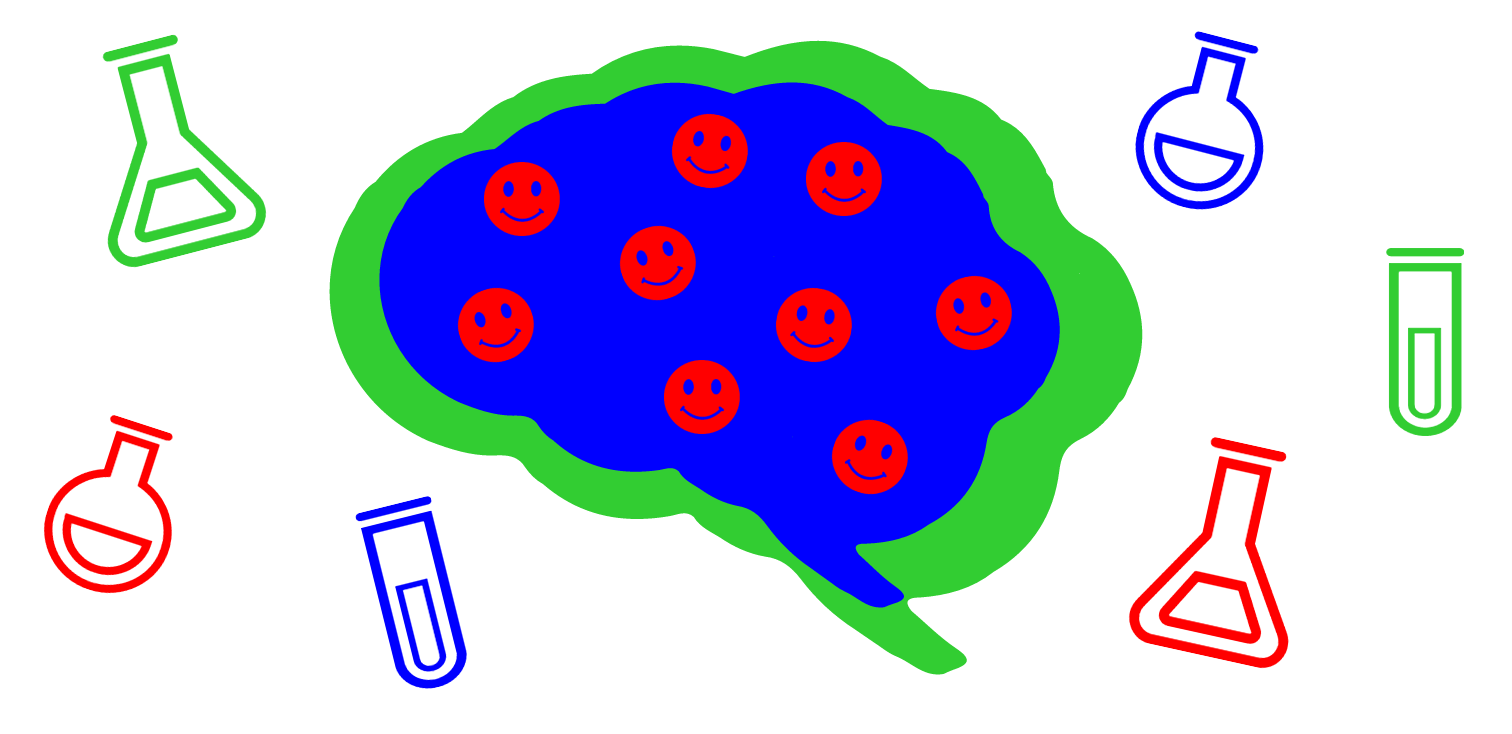You’ve likely heard about the neurotransmitter called dopamine. The first time I heard about it was in 7th grade health class when we were talking about illegal drug effects on the brain. I was surprised to learn that both stimulants (things like meth) and depressants (stuff like heroin) both cause a rush of dopamine in your brain. This creates the feeling of intense pleasure and even euphoria. However, dopamine also has a job you probably haven’t heard of…

To understand dopamine’s other job, we have to talk about what it actually does to your brain cells. Dopamine can be both excitatory and inhibitory. That is to say that it can make it easier for brain cells to signal other cells, or it can make it harder. There are two main receptors for dopamine (Receptors are small proteins usually on the surface of a cell that capture signaling molecules and relay their specific signal). The first is D1, which is an excitatory receptor. The other is D2, which is an inhibitory receptor.
The part of the brain that is shaded in red is one of the main hubs of dopamine in the brain. It’s called the substantia nigra because in a healthy brain the brain cells are actually black in color! This part of the brain plays a huge roll in regulating both desired and undesired movements. Brain cells from the substantia nigra have long projections that travel to the switchboard of the brain called the Thalamus, and to the reward center of the brain called the Striatum. These brain cells release dopamine, which bind to the D1 and D2 receptors I previously wrote about.
Desired Movement:
For desired movement, the substantia nigra releases dopamine into the striatum, which in turn does not signal the thalamus. This allows for an overall excitatory effect, which makes sense because rewarding the movement we just performed will make it happen again, thus creating desired movement.
Undesired Movement
Undesired movements, such as shakes and tremors, are inhibited by the substantia nigra. It does this by releasing a different neurotransmitter called GABA, which has an inhibitory effect. By inhibiting certain movements, we end up with an overall smooth stabilized movement. This is vital for simple tasks like picking up a class of water, or bringing a spoon to your mouth.
Parkinson’s: When the Substantia Nigra has a problem
A neurodegenerative disorder you’ve likely heard of is Parkinson’s disease. Simply put, Parkinson’s is the death of the substantia nigra. With the death of the substantia nigra, motor problems arise. There is no inhibitory effect on the thalamus, and tremors result. Additionally, dizziness, trouble sleeping, speech trouble, and loss of smell may also be present. On a cellular level, a type of plaque called Lewy bodies (composed of a protein called alpha synuclein) accumulates around the dead cells. Treatment for Parkinson’s involves replacing the lost dopamine with a precursor of the neurotransmitter called L-DOPA.
Current Research:
The paper we discussed for Parkinson’s highlighted the importance of a subset of signaling proteins called kinases. Kinases are activator molecules that relay tons of different signals in the cell. Scientists are beginning to investigate the role between kinases and the accumulation of the Lewy bodies. The kinases perform many different functions within the cells, but they mainly involve recycling mitochondria, oxidative stress, and inflammation. These kinases offer a chance to combat Parkinson’s and may be a stepping stone to curing this neurodegenerative disorder.